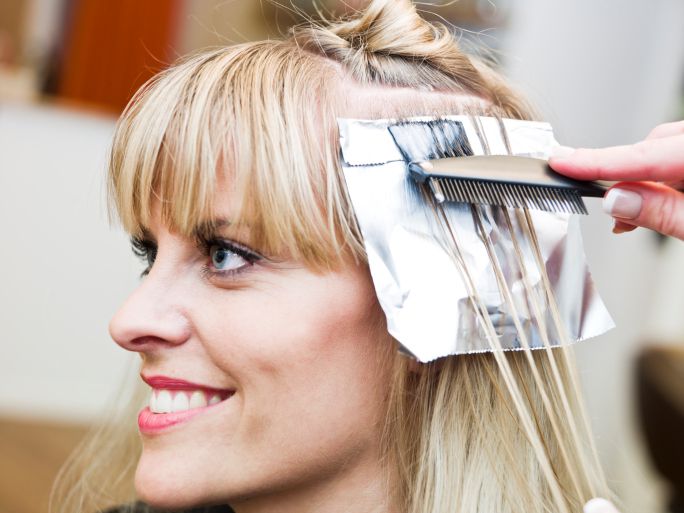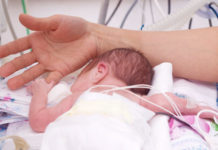Is it safe to use hair dye during pregnancy? Should other hair treatments be avoided in the first trimester or later in pregnancy? Hair dyes and other hair treatments are used frequently and many women wish to continue treating their hair while they are pregnant.
However, many types of hair dyes contain dangerous chemicals, as do other hair treatments like straighteners and bleaches. These chemicals can be absorbed through the skin and enter the mother’s circulation. Once in the mother’s blood, the chemicals from hair dyes may cross the placenta and enter the bloodstream of your developing foetus.
While further research is needed to determine whether these chemicals harm developing babies, until they are proven to be safe, it’s best to err on the side of caution. If you’re pregnant, you’re probably wanting to know exactly what the risks are and how they occur, as well as what you should do to ensure you minimise the risks of using hair dye while you’re pregnant.
Learn more about hair dyes and hair treatments. See What is a hair dye?
 Is it safe to use hair dye during pregnancy? While hair dyes can be dangerous, with a few precautions, pregnant women can safely dye their hair after the first trimester of pregnancy.
Is it safe to use hair dye during pregnancy? While hair dyes can be dangerous, with a few precautions, pregnant women can safely dye their hair after the first trimester of pregnancy.
To find out more about hair dye and pregnancy see Hair dye in pregnancy
 Using hair treatments like bleach, straighteners and some head lice treatments in pregnancy can be dangerous. Pregnant women can minimise the risk by avoiding products containing formaldehyde. They should also take steps to minimise skin contact with other hair treatments.
Using hair treatments like bleach, straighteners and some head lice treatments in pregnancy can be dangerous. Pregnant women can minimise the risk by avoiding products containing formaldehyde. They should also take steps to minimise skin contact with other hair treatments.
To learn about the safe use of hair treatments in pregnancy see Hair treatments during pregnancy
 If you are pregnant and want to use hair dye or other hair treatments, you’ll need to know how to minimise the risk of harm to your developing baby and yourself.
If you are pregnant and want to use hair dye or other hair treatments, you’ll need to know how to minimise the risk of harm to your developing baby and yourself.
To find out how to protect yourself and your developing baby see Dying my hair in pregnancy: How to minimise the risk of harm
 You need to take measures to protect yourself and your baby if using hair dyes or treatments while pregnant or breastfeeding. Make sure you can tick off all the points on our checklist to keep you and your little on as safe as possible.
You need to take measures to protect yourself and your baby if using hair dyes or treatments while pregnant or breastfeeding. Make sure you can tick off all the points on our checklist to keep you and your little on as safe as possible.
References
- Erbagaci H, Erbagci I, Sari I, Kizilkan N, Bagci C, Saygili O, Gumusburun E, Ozaslan M. Histopathological effects of maternal hair dye use on the cornea. African Journal of Biotechnology 2010; 25: 3944-3948 Abstract
- Sutton P, Woodruff TJ Perron J, Stotland N, Conry JA, Miller MD, Giudice LC. Toxic environmental chemicals: the role of reproductive health professionals in preventing harmful exposures. American Journal of Obstetrics and Gynecology 2012; 207(3): 164-173. Abstract
- McCall EE, Olshan AF, Daniels JL. Maternal hair dye use and risk of neuroblastoma in offspring. Cancer Causes and Control 2005; 16: 743-748. Abstract
- Bolt HM, Golka K. The Debate on Carcinogenicity of Permanent Hair Dyes: New Insights. Critical reviews in Toxicology 2007; 37: 521-536. Abstract
- Frequently asked questions for obstetric patients. Baylor Clinic online. (cited 24/10/2012). Available from: URL Link
- Having your baby at the women’s. Royal Women’s Hospital; Jan 2008 (cited 24/10/2012). Available from: URL Link
- Is it safe to use hair dye when Im pregnant or breastfeeding? NHS online. (cited 24/10/2012). Available from: URL link
- Hair treatment during pregnancy. American Pregnancy Association online. (cited 24/10/2012). Available from: URL link
- Hair treatments and pregnancy. Organisation of teratology information specialists online. (cited 24/10/2012). Available from: URL link
- Australian Competition and Consumer Commission. Formaldehyde in Consumer Products. 2012. [cited 2 December 2012] Available from: URL Link
- Neuroblastoma Australia. Neuroblastoma Overview. 2012. [cited 2 December 2012] Available from: URL Link
- Moore KL, Persaud TVN, Torchia MG. The Developing Human: Clinically oriented embryology (9th edition). Philadelphia: Saunders-Elselv ior; 2011. (Book)
- Collins JJ, Ness R, Tyl RW, et al. A review of adverse pregnancy outcomes and formaldehyde exposure in human and animal studies. Regul Toxicol Pharmacol. 2001 Aug;34(1):17-34. Abstract
- Burgess J. Treating head lice. BMJ. 2003; 326 (7401): 1256-7. Abstract
- Therapeutic Goods Administration. Guidelines on OTC applications for specific substances- Lindane. 2012. Cited 7 December 2012. Available from: URL Link
- Environmental Protection Authority. Regulation impact statement for the consideration of the addition of nine chemicals to the Stockholm convention on persistent organic pollutants (POPs). 2009. Cited 7 December 2012. Available from: URL Link
Kindly written and reviewed by Dr Allison Johns BSc (Hons) MBBS, Doctor, King Edward Memorial Hospital and Editorial Advisory Board Member of Parenthub and Virtual Medical Centre.



 (7 votes, average: 4.43 out of 5)
(7 votes, average: 4.43 out of 5) 







